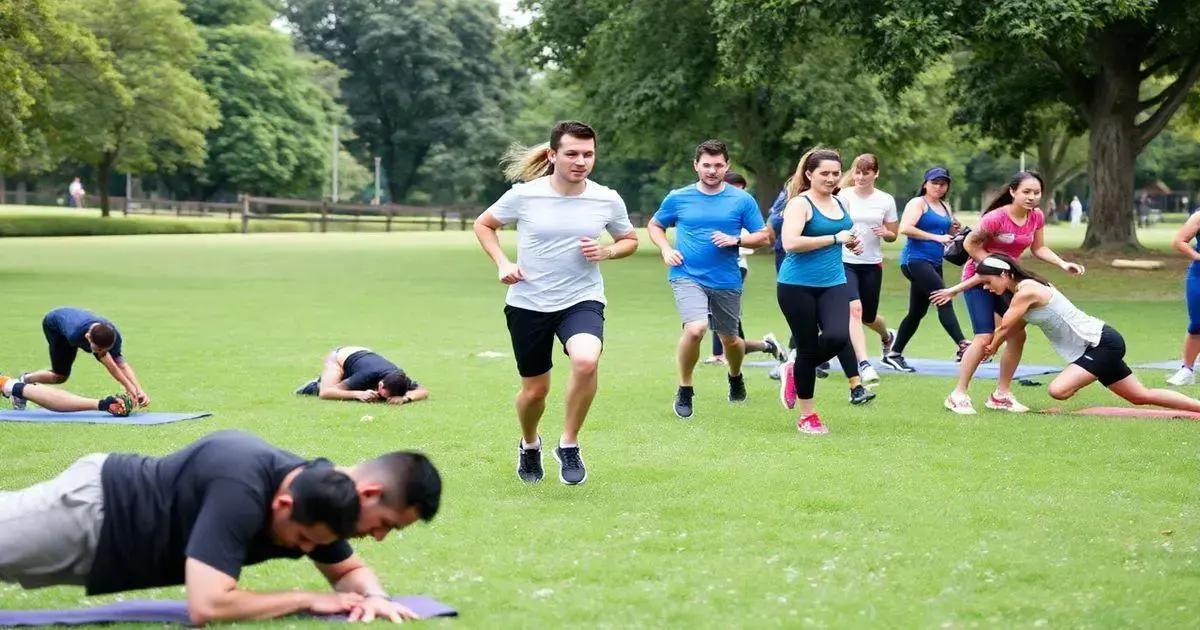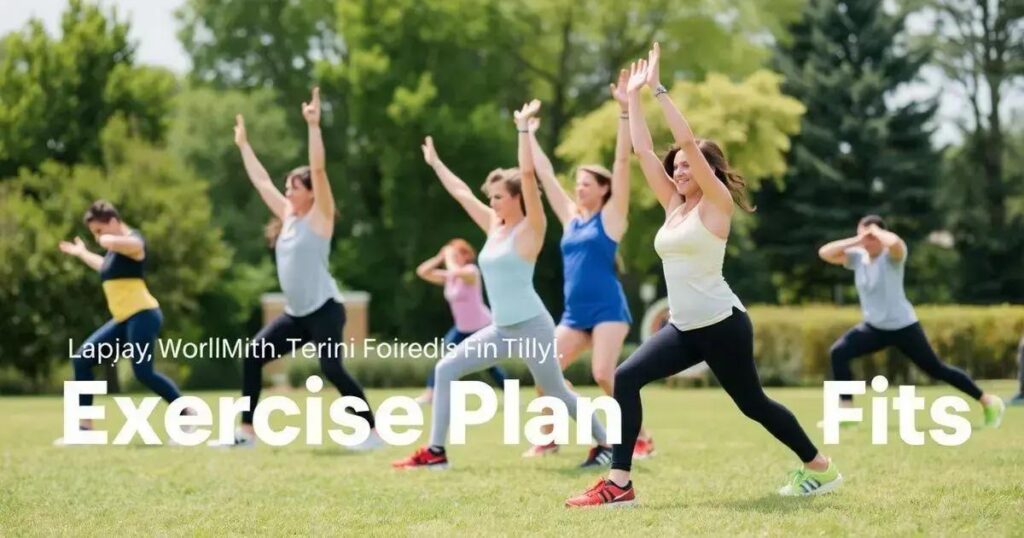Creating an exercise plan that fits your lifestyle involves understanding your current fitness level, setting SMART goals, incorporating exercise into daily routines, and staying motivated by tracking progress and being flexible with your plan.
Creating an exercise plan that fits your lifestyle is essential for achieving your fitness goals while ensuring that you enjoy the process. A personalized exercise plan not only enhances your physical health but also integrates seamlessly into your daily routines. This article will guide you through the steps to assess your fitness level, set achievable goals, incorporate workouts into your schedule, and maintain motivation throughout your journey.
Understanding Your Current Fitness Level

Understanding your current fitness level is the first step in creating an exercise plan that fits your lifestyle. This involves evaluating your physical abilities and identifying areas for improvement. Start by considering different aspects of fitness, including strength, endurance, flexibility, and body composition.
Assessing Your Strength
Strength is critical for daily activities and overall health. You can assess your strength through simple exercises, such as push-ups or squats. Count how many you can do in a row, and this will give you a baseline.
Evaluating Endurance
Endurance reflects your ability to sustain physical activity over time. A quick way to evaluate your endurance is to time yourself during a brisk walk or jog for a set distance, like one mile. This will help you see where you stand.
Measuring Flexibility
Flexibility helps prevent injuries and improves overall performance. To measure your flexibility, try a simple stretch like reaching for your toes. Pay attention to how far you can reach and note any areas that feel tight.
Body Composition Basics
Your body composition is the ratio of fat to lean mass in your body. While weighing yourself can provide some insight, using methods like caliper tests or body composition scales can give you a more accurate picture.
By understanding these components of fitness, you can set a strong foundation for your exercise plan. Tailoring your workouts to target areas that need improvement will help you achieve your fitness goals more effectively. Remember, progress can be gradual, and listening to your body’s feedback is essential for long-term success.
Setting Realistic Fitness Goals

Setting realistic fitness goals is crucial to your success in creating an effective exercise plan. When your goals are achievable, you are more likely to stay motivated and committed to your routine. Here are some key steps to help you set these goals.
Use the SMART Approach
SMART goals are Specific, Measurable, Achievable, Relevant, and Time-bound. Start by defining what you want to accomplish. For example, instead of saying, “I want to get fit,” say, “I want to run a 5K in under 30 minutes within three months.” This clarity helps focus your efforts.
Break Down Larger Goals
Large fitness goals can feel overwhelming. Break them down into smaller, actionable steps. If your goal is to lose 20 pounds, focus on losing 1-2 pounds per week. This makes progress manageable and allows you to celebrate small victories along the way.
Consider Your Lifestyle
Your personal circumstances matter when setting goals. Consider your work schedule, family responsibilities, and other commitments. Choose goals that fit your lifestyle. For example, if you have a busy week, setting a goal to work out three times instead of five may be more attainable.
Track Your Progress
Keep a record of your workouts and achievements. Tracking progress helps you stay accountable and motivated. Use a journal, an app, or a calendar to document your milestones. Seeing how far you’ve come can inspire you to keep going.
Staying flexible is also important. If you find a particular goal isn’t working for you, adjust it. Being adaptable helps you maintain enthusiasm and reach your fitness aspirations without unnecessary stress.
Incorporating Exercise into Your Daily Routine

Incorporating exercise into your daily routine can be simple and effective when done correctly. Here are some practical strategies to help you add fitness seamlessly into your life.
Start With Small Changes
Begin by making small adjustments in your daily activities. For example, take the stairs instead of the elevator or walk or bike to nearby destinations instead of driving. These small changes can add up to significant health benefits.
Schedule Your Workouts
Just like any other important activity, schedule your workouts. Find a time that works best for you, whether it’s early in the morning or during lunch breaks. Block off this time in your calendar so you treat it as a priority.
Make Use of Breaks
Incorporate short exercises during breaks. Stand up and stretch, do some squats, or take a brisk walk around your office or home. Even five-minute activity bursts can energize you and make a difference in your overall well-being.
Involve Family and Friends
If possible, involve your family and friends in your exercise routine. Go for walks together, join a fitness class, or try a fun sport. Exercising with others can make it more enjoyable and help keep you motivated.
By integrating these fitness habits into your day, you can make exercise a natural part of your lifestyle. Remember to listen to your body and enjoy your physical activities!
Staying Motivated and Adjusting Your Plan

Staying motivated and adjusting your plan is essential for long-term success in your fitness journey. It’s common to face challenges along the way, but with the right strategies, you can maintain your energy and enthusiasm.
Track Your Progress
Keep a record of your workouts and achievements. Use a journal or an app to note down your progress. This visual representation of your journey helps you see how far you’ve come, making it easier to stay motivated.
Set New Challenges
Once you reach your initial goals, set new challenges to keep things interesting. This could be increasing weight in strength training, trying a new sport, or participating in a race. New challenges can reignite your passion for fitness.
Find a Workout Buddy
Working out with a friend or group can boost your motivation. They can help hold you accountable and make exercising more enjoyable. You can support each other’s progress and celebrate accomplishments together.
Be Flexible with Your Plan
Sometimes life gets busy, and that’s okay! Be ready to adjust your exercise plan as needed. If your schedule changes, modify your workouts instead of skipping them altogether. Shorter sessions or at-home workouts can still be effective.
Additionally, listen to your body. If something isn’t working or if you feel exhausted, don’t hesitate to adjust your plan. Ensuring your routine remains enjoyable and aligned with your current needs is key to long-term success.
Bringing It All Together: Your Fitness Journey Awaits
Creating an exercise plan that fits your lifestyle is a crucial step toward achieving your fitness goals. By understanding your current fitness level, setting realistic goals, and incorporating exercise into your daily routine, you set a strong foundation for success.
Moreover, staying motivated and being flexible with your plan will guide you through challenges and keep your journey enjoyable. Remember that fitness is not a one-size-fits-all approach; it’s about finding what works best for you.
Embrace the process, celebrate your achievements, and make adjustments as needed. Your path to health and wellness is unique, and every workout brings you closer to a happier and healthier you.
FAQ – Frequently Asked Questions About Creating an Exercise Plan
How can I assess my current fitness level?
You can assess your fitness level by evaluating your strength, endurance, flexibility, and body composition through simple exercises and measurements.
What are SMART goals in fitness?
SMART goals are Specific, Measurable, Achievable, Relevant, and Time-bound objectives that help you set and achieve realistic fitness targets.
What are some easy ways to incorporate exercise into my daily routine?
You can incorporate exercise by making small changes like taking the stairs, scheduling workouts, and using break times for physical activity.
How can I stay motivated to stick to my exercise plan?
Track your progress, find a workout buddy, and set new challenges to keep things engaging and ensure you stay motivated.
What should I do if I can’t stick to my fitness plan?
Be flexible and adjust your plan as needed. Shorter sessions or home workouts can be just as effective, so adapt to your current lifestyle.
How important is it to celebrate small achievements?
Celebrating small achievements is crucial for maintaining motivation and recognizing your progress, helping you stay committed to longer-term goals.












